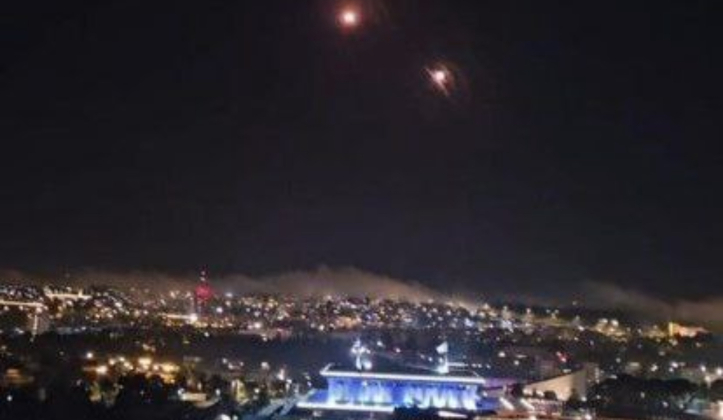On April 19 at approximately 3:00 AM local time the Israeli Defence Forces launched drone strikes on targets in and around the Iranian city of Isfahan. Iran’s Tasnim news agency has reported that nearby nuclear facilities remained completely safe, with local media reporting that air defences targeted several small drones in the area. Footage published by local media has shown interceptions of drone attacks during the operation. An explosion was nevertheless seen near the 8th Army Air Force Base, indicating that the attack was at least partly successful. The base hosts one of the country’s most capable fighter classes, F-14 Tomcats, which have been deployed to guard nearby nuclear sites and have been modernised considerably over the past decade with indigenous avionics and weaponry. Damage to the F-14 fleet remains a significant possibility, with recent reports providing no indication that the aircraft were deployed to intercept incoming drones. Iran relies much more on ground based air defence systems that on fighters to protect its airspace, with these long anticipated to shoulder the bulk of responsibilities in the event of an Israeli or Western attack.

With Iran’s Supreme National Security Council confirmed to have met following the attack, its launch notably coincides with the birthday of Iranian Supreme Leader Ali Khamenei – leading to speculation that this may have been timed intentionally. Multiple flights are also confirmed to have been diverted from Isfahan. Both the date and the target hold symbolic value, the latter due to its proximity to Iranian nuclear facilities. The attack comes five days after an Iranian Revolutionary Guard Corps drone and missile strike under Operation True Promise on April 14, targeting Israeli military bases in retaliation for an Israeli attack on an Iranian diplomatic building in Syria twelve days prior. The April 1 attack killed a brigadier general in the elite Quds Force of the country’s Revolutionary Guard Corps Mohammad Reza Zahedi, and ten other Iranians including several long serving diplomats and General Zahedi’s deputy General Haji Rahimi, setting of the beginning of multiple stages of escalation in which the latest Israeli strike is only the latest.
The limited scale of the Israeli strike indicates that it may have been intended primarily for political purposes to satisfy domestic demand for retaliation, rather than to secure serious military objectives. With the attack being much smaller in scale than that launched by the Revolutionary Guard Corps five days prior, it may indicate that Tel Aviv seeks to avoid more serious escalation of hostilities. The attack comes amid continued hostilities between Israel forces and those of the Lebanese political party and militia group Hezbollah, with both sides demonstrating advanced offensive capabilities and the latter obtaining formidable precision guided weaponry from Iran.
Update: Iranian media outlets have confirmed that no missile attacks where launched on the country. Iranian Space Agency spokesman Hossein Daliryan stated regarding the nature of the drone strikes: “The downed drones had a short range and were probably launched from Iranian territory.” Sources in Tehran informed Lebanese media outlet Al Mayadeen that there was no external aggression in the country. The possibility of an internal attack coordinated with external forces, likely Israel, follows a long history of such joint operations, with anti-government elements within Iran having supported assassination attempts against Iranian scientists and military leaders in the past. Similar coordinated use of short range drones has been seen in Russia, where Ukrainian-aligned forces have used such aircraft to attack Russian military bases from within the country’s own territory.
